Denmark: World’s 2nd happiest nation has reason to smile

COPENHAGEN, Denmark – I’m in the land of happy.
Happy in the streets. Happy in the bars. Happy in the schools. Happy in the workplace. Hell, they’re happy in hospitals. Why not? It’s free.
Everyone in Denmark is happy. This concept would make the average American’s mind snap. Let’s see. Live in a society with up to a 50-percent tax rate, €675 euro meals, winter light lasting about eight hours a day and weather that would make Vikings check in at the Y.
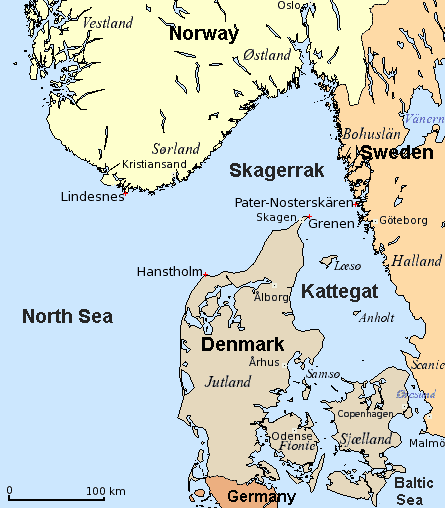
The poll
Yet there Denmark is every year, in black and white. According to the annual World Happiness Report, Denmark is the second-happiest country in the world behind Finland. Denmark has been second for the last four years. It finished third behind Finland and Norway in 2018 and second to Norway in 2017.
Then Norway’s soccer team failed to make the World Cup and fell out of the Happiness Report’s top 10. Seriously, here is the 2022 report, compiled with the help of the Gallup World Poll:
- Finland
- Denmark
- Iceland
- Switzerland
- Netherlands
- Luxembourg
- Sweden
- Norway
- Israel
- New Zealand
Note: U.S. is 16th. Italy is not on the list of top 23.

The source of Denmark’s happiness is no secret. If you haven’t read it, they’ll be “happy” to tell you. It’s called security. It’s called unselfishness. It’s called standard of living. Combined, it’s called a social democracy. Let’s count the benefits. In Denmark:
- All health care is free. Health insurance costs about $20 per person per month. The average annual insurance cost in the U.S. in 2022 was $7,911.
- College education is free. In fact, every Danish university student receives $900 a month. The average cost in the U.S. for a year of university tuition in 2022 was $35,551.
- Danes get parental leave of 52 weeks, including up to 32 paid. In the U.S., companies with fewer than 50 employees have no legal requirement to provide paid or unpaid leave. It’s one of six countries that do not.
- Danes get five weeks paid vacation. In the U.S., one-third of private industry workers receive 10-14 days paid vacation a year. After 10 years, they receive 15-19.
- If you lose your job, based on the 12 months of your highest income within the past two years, you receive up to $2,665 a month. In the U.S. unemployment benefits range from $160 a month to $1,800.
- It has the best cinnamon rolls ever produced by human hands. (More on that in next week’s blog about Danish cuisine.)
Said Brian Nygaard, a long-time Danish friend: “Society works better if it works better for more people.”

Why Denmark?
I came to Denmark for two reasons. Marina, my girlfriend and ace photographer, has wanted to visit Copenhagen since I met her eight years ago. I’d also read that Copenhagen has had the world’s trendiest restaurant scene the last 10 years and it has boomed since the pandemic. Then I paid €100 for two sandwiches and two beers and wondered what all the happiness was about. (Read more next week when I filet and BBQ said Danish cuisine, cinnamon rolls notwithstanding.)
It’s only a 2 ½-hour direct flight from Rome to Copenhagen and the city’s spotless, if utilitarian, subway system, built in 2002, took us to the city center in 20 minutes. We stayed at the Hotel Astoria, a classic old hotel built in 1935. The original blazing red sign can still be seen from miles around on cold, dark nights. It was Copenhagen’s first luxury hotel and the lobby has old American jazz tunes that make you feel you’re in town right after the Nazis left.
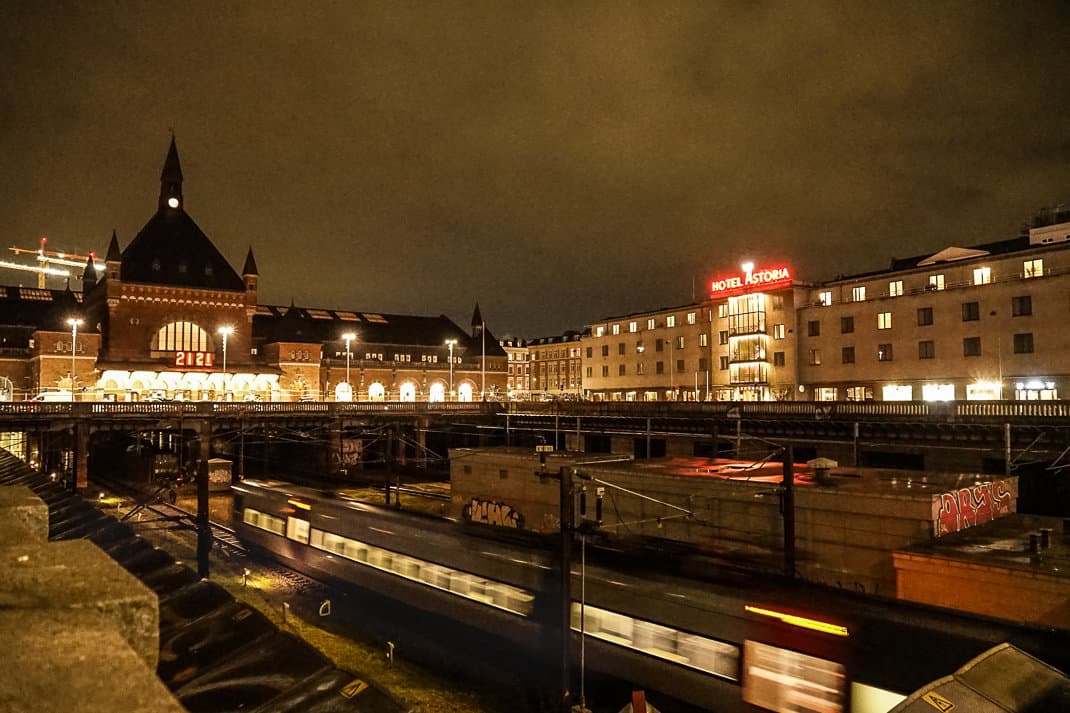
Next door are two memories from my only other trip to Denmark in 1978. Copenhagen’s train station was built in 1911 and I remembered pulling in from Hamburg as a scruffy, 22-year-old backpacker thinking I’d stumbled into a Humphrey Bogart movie. The pre-war architecture style of a massive brick facade is topped with pointy spires scattered around the roof and a huge red-illuminated clock over the entrance.
Not far away is Tivoli, Copenhagen’s landmark amusement park where I spent mild summer nights attending concerts, taking carnival rides, drinking $1 Carlsbergs and ogling beautiful Danish blondes.
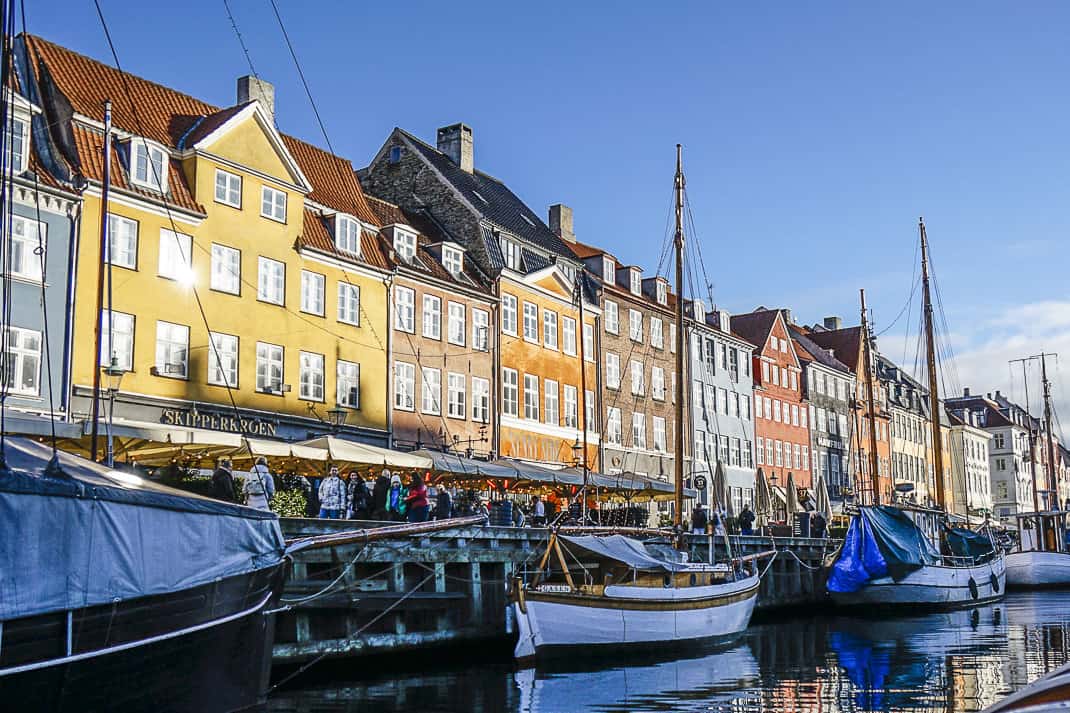
The best way to get a feel for Copenhagen’s beauty and high standard of living is a canal cruise. It starts in Nyhavn, the neighborhood along one of the many canals that slice this city into neat individual sections. Nyhavn is Copenhagen’s most distinct neighborhood. Its houses lining the canal are painted in bright blue, red, yellow, orange, red and pink. It looks like a street built by gumdrops.
Long a haven for writers and artists, Nyhavn touts tony restaurants and cafes selling €5 espresso. It was once home to Hans Christian Andersen, Denmark’s famed 19th century writer whose works, mainly fairy tales, have been translated into 125 languages.
The hour cruise is a good overview of Danish design, which along with the cuisine, has increased Denmark’s international footprint. The difference is, unlike the cuisine, looking at Danish buildings doesn’t cost your first-born male child.
Danish architecture is famous for its futuristic design and practicality. In fact, this year Copenhagen is the 2023 World Capital of Architecture with meetings and celebrations all year.
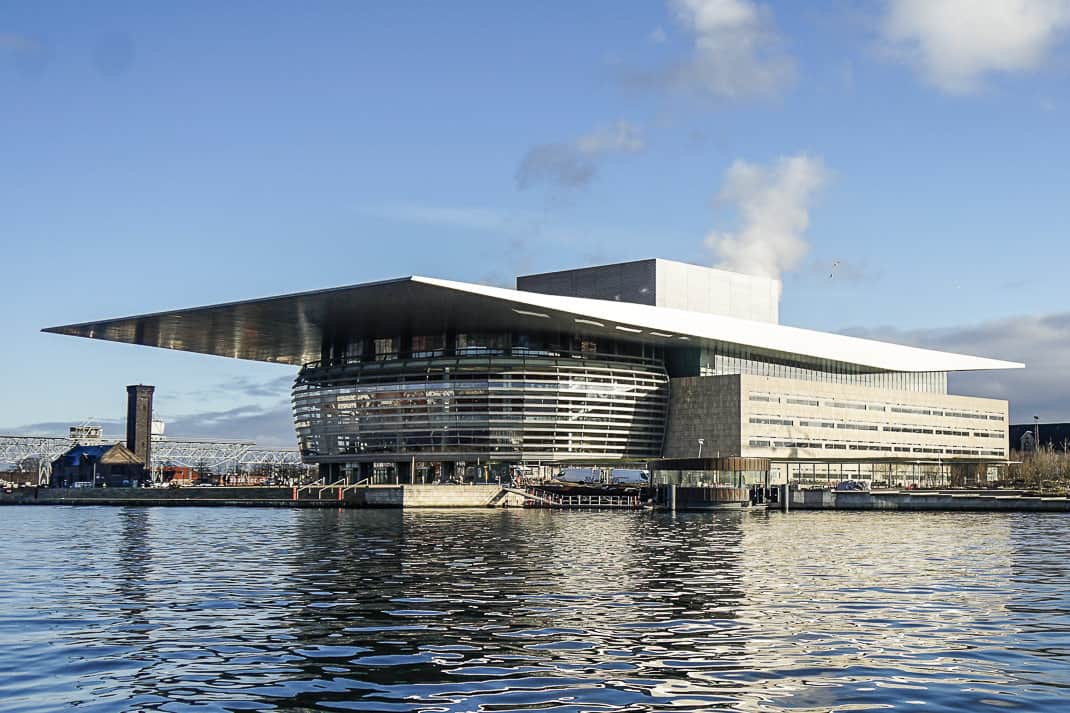
On a sunny 36-degree day, one of the first buildings we passed was the Operaen, Copenhagen’s opera house. Built in 2004, its massive flat roof is the size of two football fields. It hangs 30 meters over the round, glass wraparound window and stone platform outside that, in summer, divers jump off into the water below. They join other crazed locals in the water, which, yes, is clean enough to swim.
The Danes’ greatest architectural triumph isn’t even in Denmark. Copenhagen’s own Jorn Utzon co-designed the Sydney Opera House in 1973.
The BLOX building is a collection of different-sized glass boxes all piled on top of each other. It looks like a giant child went mad with glass Legos. It’s offices, meeting halls and homes to businesses, organizations and researchers with an emphasis on the Nordic approach to urbanization.
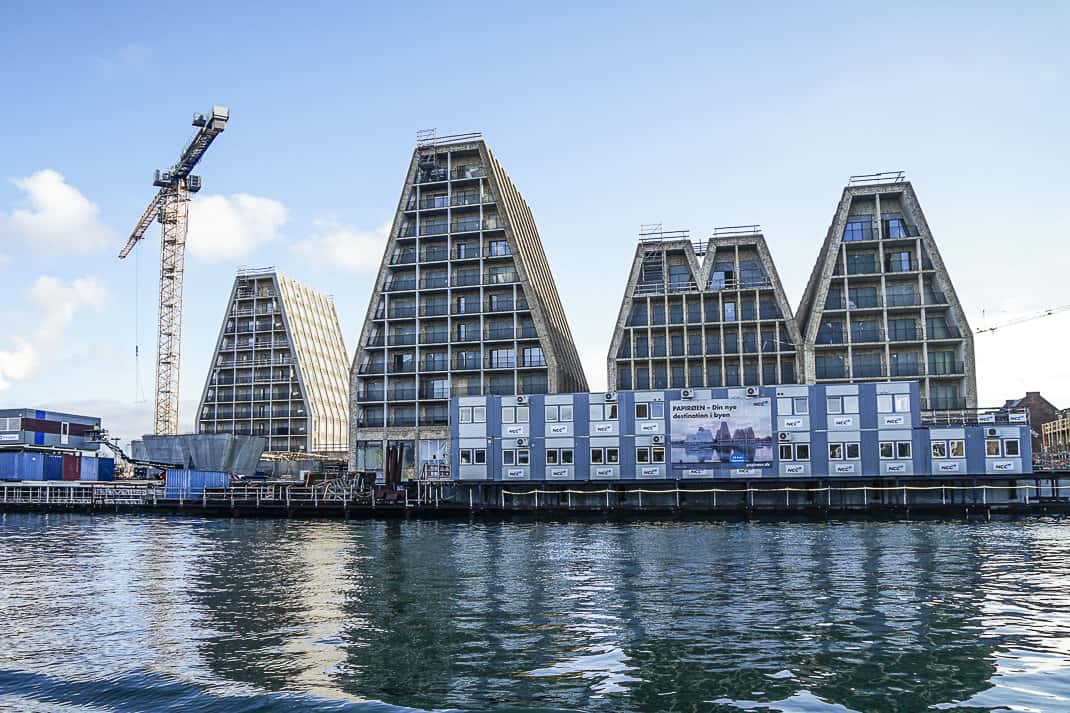
The apartment houses we passed were beautiful. So many of them have glass fronts with garden spaces, some with indoor and outdoor pools. They have beautiful views of water that gives Copenhagen such a fresh look.
Copenhagen’s design chops stretch to the interior. Its streets are lined with shops selling sleek furniture, from office chairs to living room couches. We passed one shop where men in long aprons molded jars, glasses and bowls on wildly spinning potter’s wheels. I thought of buying something until I saw one speckled water glass was 399 Danish kroner, about €54.
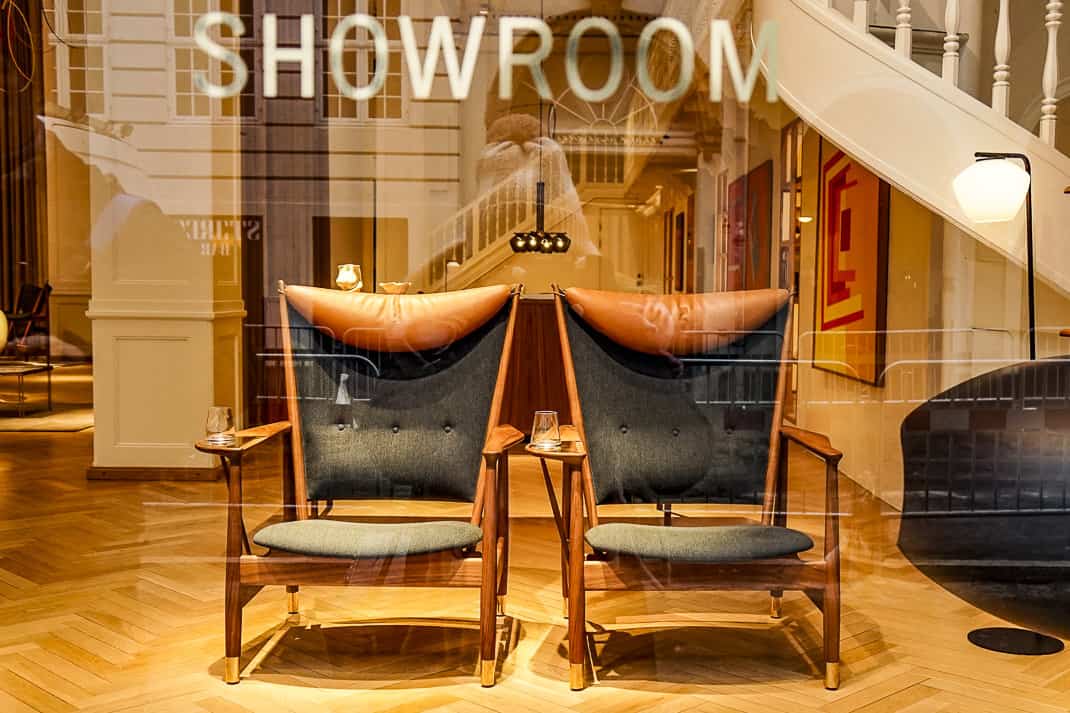
But it costs nothing to stroll the cobblestone pedestrian streets and narrow roads away from Copenhagen’s mild traffic. Friends gathered over cups of coffee in old-fashioned cafes. Men, oblivious to the cold, drank tall, narrow glasses of beer at outdoor tables. Lovers window shopped hand in hand.
Do they seem happy? Yes, they seem happy. So do people out drinking in the U.S. But in Denmark, happiness is more subtle. Danes don’t walk around with that artificial, sugary, God-loves-me glow so many born-again Christians elicit.
One night we walked into the Jernbanecafeen (Railroad Pub). It’s across the street from the station and filled with railroad art, from pictures of old locomotives to stylish plates emblazoned with trains. It’s been slinging Danish beer and spirits since 1933 and I asked the bartender, Johanne Madsen, why Danes are so happy.
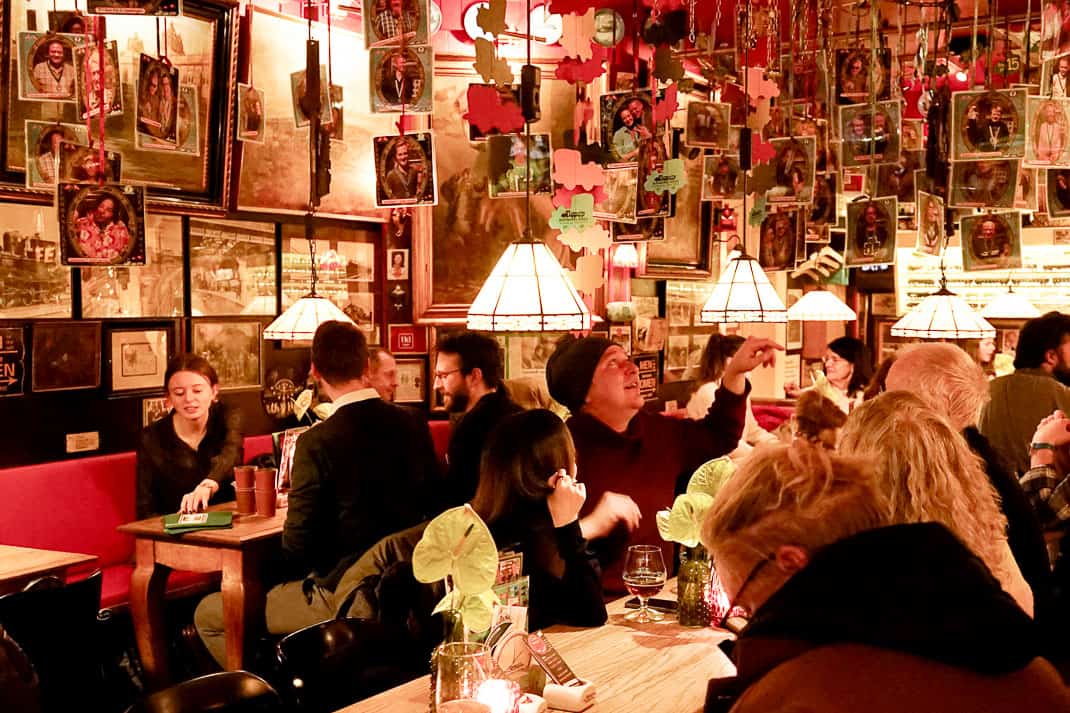
“It’s the great welfare system,” she said in, like I saw all over Copenhagen, perfect English. “All our medical costs, medicine, schooling is free. The only thing we pay for is dental. No matter what happens, we know we won’t be put on the street.”
Between pouring Carlsberg and cocktails for neighborhood regulars and Dane businessmen who’ve made Jernbanecafeen their pub away from home, she talked about the contrast between the U.S. and Denmark. While this isn’t universal, I think Americans believe the U.S. is the greatest country in the world for two reasons: It has the strongest military and you can make the most money.
Neither affects the vast majority of Americans. In the U.S., the top 1 percent have 32 percent of the wealth. Many Americans, and immigrants, say they want to get rich.
In Denmark?
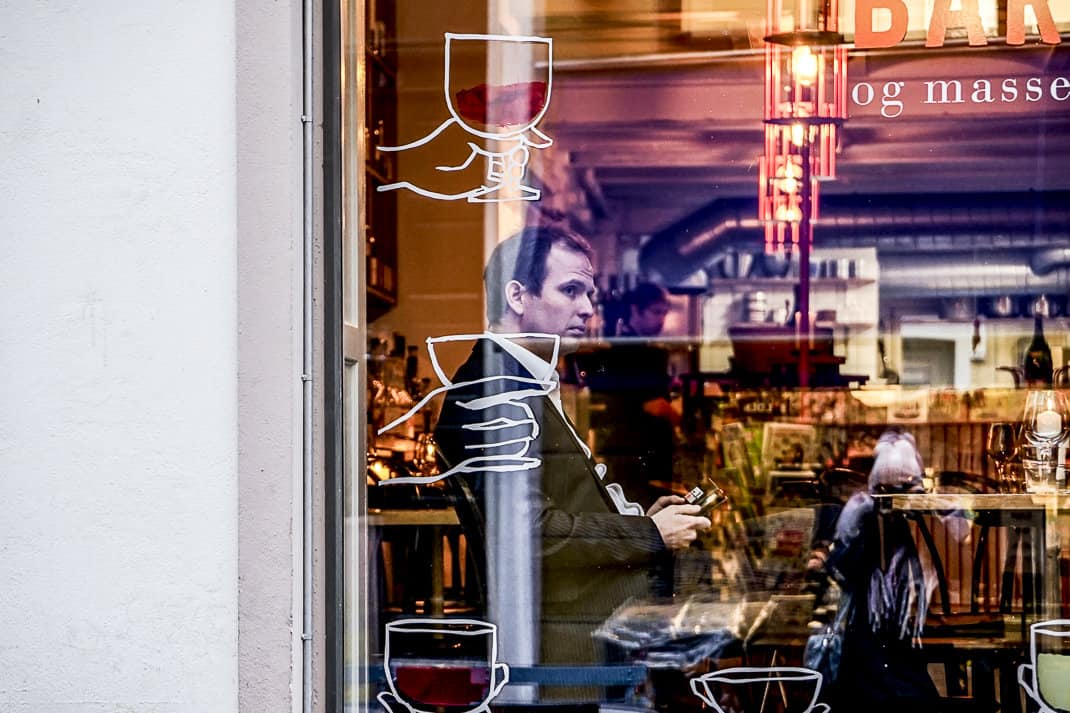
“I guess most people would like money enough and something in the savings for a rainy day, so to speak,” Johanne said. “Or if something happens to your teeth, which is not covered. People say you need savings for your teeth.
“Because here we are safe if you lose your job, all of that with welfare. Most of us are content if we have enough and something for a bit of luxury like holidays and that’s it.”
The world follows U.S. politics. What the U.S. does affects the world. All Scandinavians watch the U.S. split over creeping socialism which Republicans accuse the Democrats of doing. Yet Republicans don’t know what socialism is. They think it equates to Stalinism, although many Republicans think Stalin is a backup quarterback in the SEC.

“I found it so bad when Obamacare was reeled back because that was sort of baby steps toward a welfare society that actually works for the people who are in need of it,” Johanne said. “But I understand in a society where you are used to making your own dream come true – how do you say it … the American dream? – where you can make anything of yourself. Then you don’t necessarily have to take responsibility for others.
“In that sense when that’s been the way the country is founded, it’s going to take a long time to change that mentality.”
I told her about the homeless situation in the U.S. On a one-night layover in San Francisco on our way to Oregon for Christmas 2019, I saw more homeless around Union Square than I’ve seen in nine years in Europe.
“I used to live in India,” Johanne said. “I saw a documentary in Denmark about the situation in the U.S. Seeing those photos reminded me of the outskirts of the slums in Mumbai. The way you value a society is how you treat the weakest in a society.”
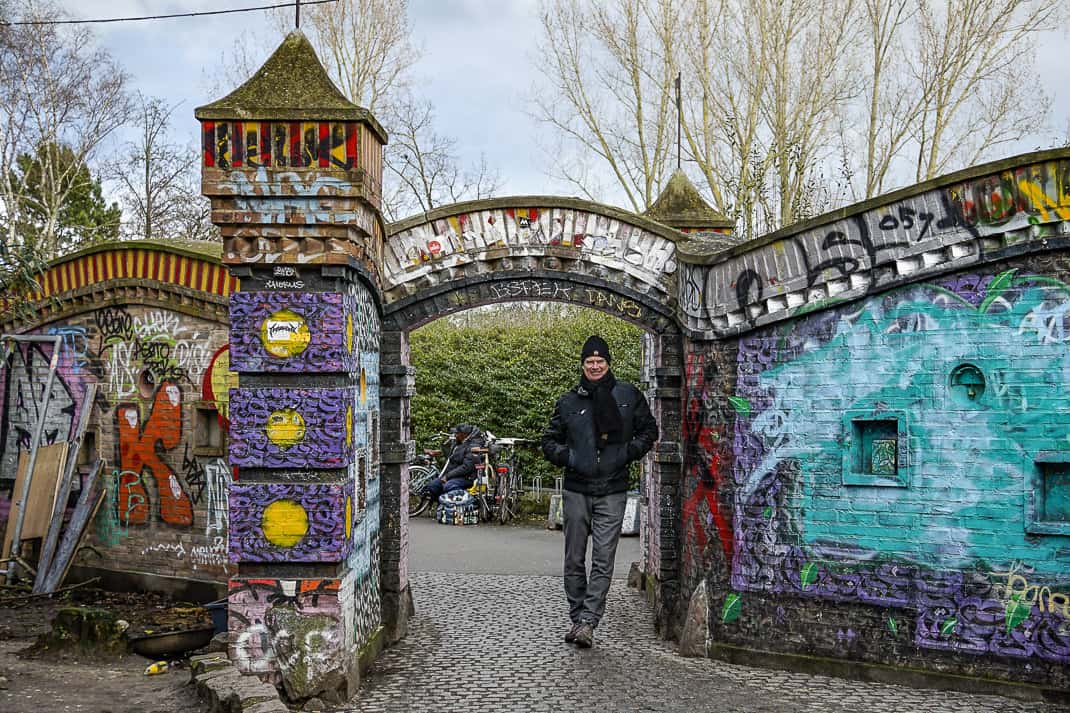
Christiania
To reach the heart of Denmark’s happiness, I went to the happiest place in Denmark. Christiana was legendary even when I backpacked around the world in 1978-79. It is Copenhagen’s drug den. It’s one neighborhood dedicated to the selling and smoking of what many consider the best weed in Europe.
I met people in Greece, Egypt, Indonesia, all had aims at Copenhagen’s Christiania. The neighborhood isn’t far from our hotel, on a peninsula across the water from Nyhavn. I knew we had arrived when we passed under a heavily graffiti-covered arch next to a house with beautiful street art.
Whatever the guy smoked when he painted the pot-bellied elf staring down a dragon, I want some.

Within 50 meters of the arch, I could smell those aromas of marijuana’s earthy, burnt wood drifting through the cold air. Stands, just like ones you’d see in a Christmas village, sold various levels of grass. Two buildings sported huge drawings of encircled cameras with slash lines indicating we couldn’t take pictures.
That was fine with Marina. She was visibly nervous.
We ventured to an outdoor food court where the burgers and fries, no doubt, tasted better with the pot-filled air raising munchy levels to those of a starving dog. I don’t get the appeal of pot. I never understood why it’s a $340 billion industry.
The biggest positive about pot is it makes food at IHOP taste good.
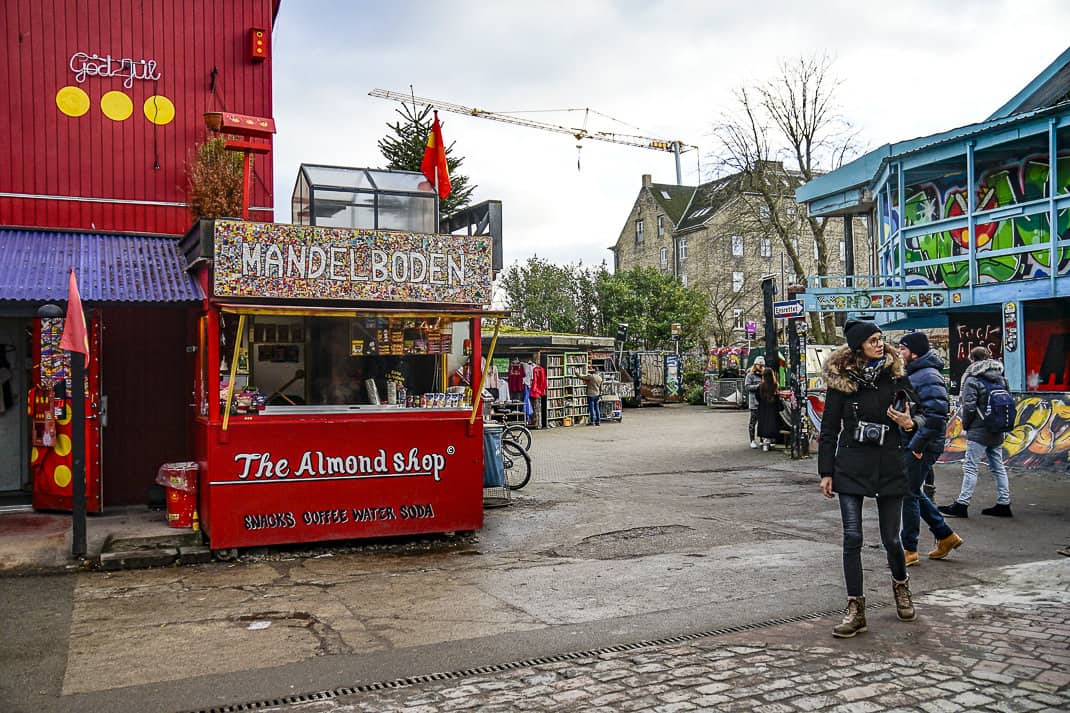
Pretending I was a customer, I asked a portly, bearded man in his 20s how much. He picked up a bag and said, “Twenty-four grams (about one ounce) 1,500 kroner (Just over €200).”
I asked if pot’s legal. He said it’s illegal only because the government can’t tax it. They get busted all the time. He said the first arrest is usually no penalty. The second offense is three or four months.
That’s serious. He pointed to a string of bikes blocking the entrance to the area, meant to keep cop cars from pouring in. I told him it’s a strange law because smoking pot, unlike some drugs, doesn’t lead to violence.
“No, it doesn’t make you aggressive at all,” he said. “It acts the opposite. It makes you very chill. For people who are passive aggressive it actually helps.”
He would only give his name as Flamingo Man. I asked him if Denmark really is that happy.
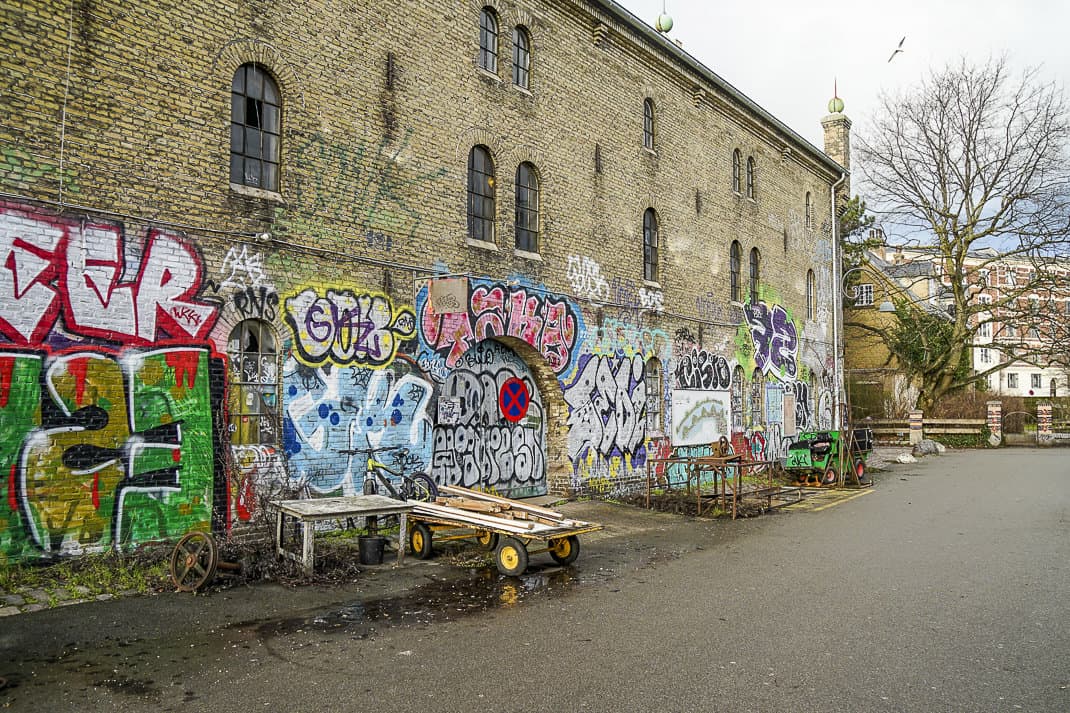
“I reckon it is,” he said, taking a seat by a building. “I seem pretty happy. All the people around me seem pretty happy. I don’t know anybody who seems unhappy and depressed. It seems like a happy country but obviously everybody has great days and stuff like that.”
I asked him if Danes don’t care about getting rich.
“Obviously, we’re not capitalists so we like money but it’s not like we prefer money over healthcare,” he said. “For youth and for all the people, health and education is a lot more important than fucking money.”

Others weigh in
One person with an objective viewpoint is my Danish friend, Brian Nygaard. We met in 2003 when I was a rookie cycling writer covering the Tour de France for The Denver Post. He was the PR man for the Danish team, CNC, whose star, Tyler Hamilton, was a Colorado guy whom I covered closely.
In 40 years of sportswriting, Brian was one of the two or three best PR men I’ve ever worked with. Born with wanderlust, he moved to Tuscany 20 years ago and we’ve kept in touch since I moved to Italy in 2014. Now on the board of Stuhlmuller Vineyards in Northern California, where he lived in 2020-21, and doing cycling commentary for Danish TV, he talked to me from his home in Pietrasanta, near Lucca, about the contrasts between Denmark and the U.S.
“I think it’s a real scary perspective on the idea of everyone in charge of their own destiny because everyone’s not able to,” said Brian, who grew up in Denmark’s northern peninsula of Jutland. “To be specific, I grew up in Denmark and even here in Italy I’m used to health care being available to all and no one is able to get in front of the line just because of income or connections. It’s just how it works.”

I asked him if many Danes take advantage of the system and just collect the sizable government dole instead of working.
“If it’s a small percentage who take advantage of it, it’s still worth the setup in case other people are helped in the right way,” he said. “I used to like going to visit San Francisco. I lived close by and spent a lot of time there. But I also see now that it’s a city that’s failed completely even if they’re trying to help. It’s not always the right solution to think people can help themselves.”
I have a fellow retired sportswriter living in Helsinki. I visited Michael Hunt when Marina and I went to Finland before Christmas 2021. I called him and asked about Finland’s status as the happiest country in the world. He reiterated the point he made 13 months ago, that “It’s a we society, not a me society.” He then said the only city in the world he’d live in besides Helsinki is Copenhagen.
It’s not lost on people that all five Nordic countries practicing social democracy are in the Happiness Report’s top eight.
“It rubs off on me,” Michael said. “I haven’t felt anxiety. My happiness level increased 100 percent after I moved here. It’s been 5 ½ years, and that feeling’s never going away. It just feels right. I’ve told Finns this.
“Finns have a saying: If you’re born in Finland, you win the lottery.”
I’m sold. I couldn’t live in Denmark. The outrageous restaurant costs turned me off. I don’t want to take my banker with me and get a seafood loan. But the aesthetics of a social democracy are appealing to people like me – and Italians – who value other people besides themselves, who value basic happiness such as health, security, friendship and family. Wealth be damned.
I’d call all that a natural high.

If you’re thinking of going …
How to get there: You can fly round trip from London as cheap as $70 on Ryanair. I paid €133 on Ryanair for my round-trip flight from Rome.
Where to stay: Hotel Astoria, Banegardspladsen 4, 45-44-40-1001, https://www.hotelastoria.dk, hello@hotelastoria.dk. Built in 1935, Copenhagen’s first luxury hotel is across the street from the train station and still has trappings of the early 1900s. I paid €117 a night.
Where to eat: Maven, Nikolajplads 10, 45-3220-1100, www.restaurantmaven.dk, booking@restaurantmaven.dk, 11:30 a.m.-11:55 p.m. Monday-Saturday. Stylish restaurant near the Royal Quarter with excellent selection of smorgasbord sandwiches at relatively sane prices. I paid €58 for lunch for two.
When to go: Summers are mild and due to the high costs, Denmark gets fewer tourists than much of Western Europe. Average high in July and August is 71. In January, temperatures range from 31-38.
For more information: Copenhagen Information Centre, Vesterbrogade 4A, 45-7022-2442, www.visitcopenhagen.com, 9 a.m.-4 p.m. Monday-Friday, 10 a.m.-3 p.m. Saturday-Sunday. Has a cafe and lounge.


January 24, 2023 @ 2:50 pm
This comes at a very opportune time for me. I have always wanted to visit Scandinavia and this is the year. I just told my husband that we are starting in Denmark. It’s a hop, skip and jump from Milano! Thanks for the gentle nudge.